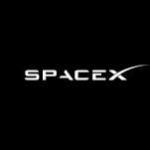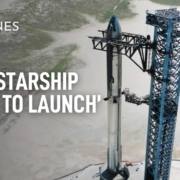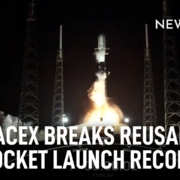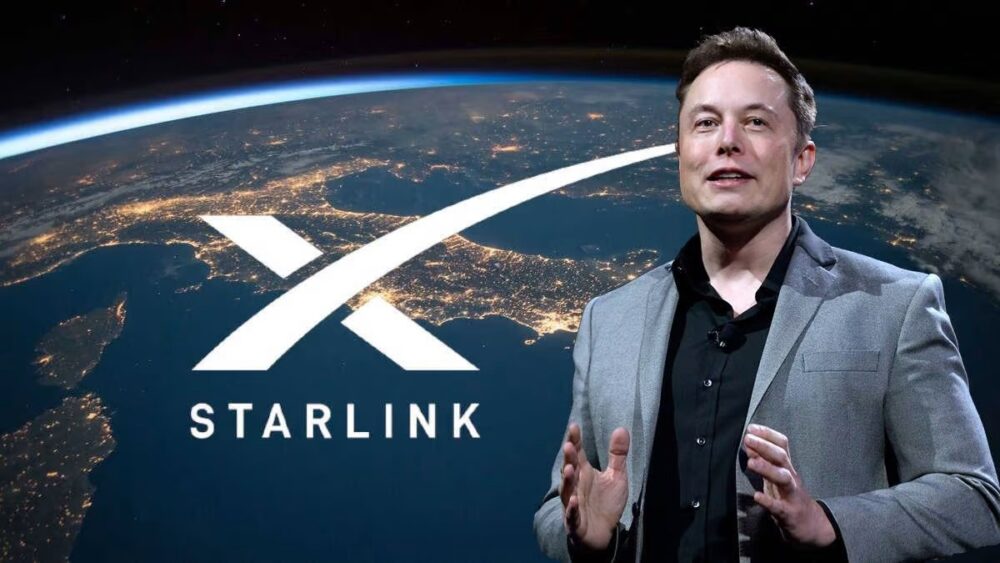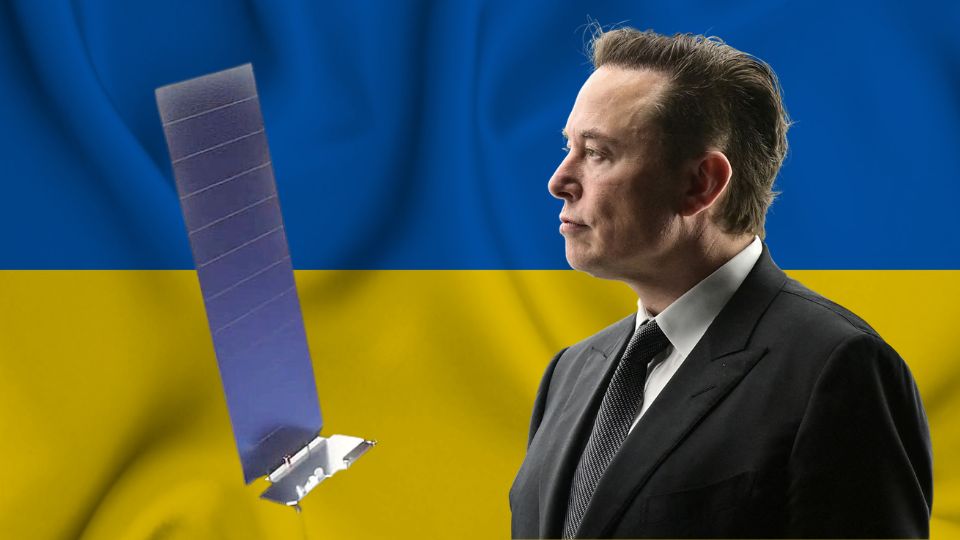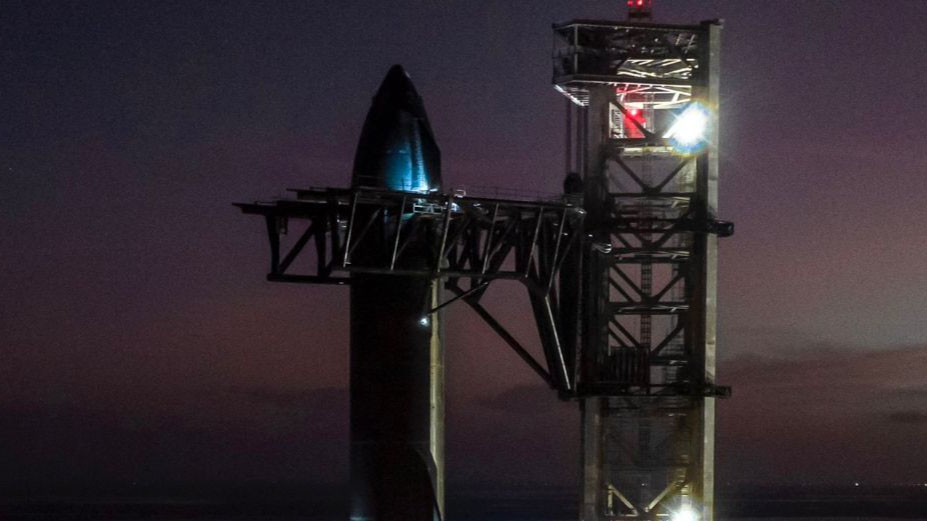Musk: Starship ‘ready to launch’
Reponding to a video posted on X by SpaceX, showing a “fully stacked” Starship on the launchpad at Boca Chica Starbase, Musk says Starship is ready for its second attempt at an orbital flight test, pending regulatory approval.
Starship is ready to launch, awaiting FAA license approval
Starship is ready to launch, awaiting FAA license approval https://t.co/WjENkdudo9
— Elon Musk (@elonmusk) September 6, 2023
The FAA says the launch licence application for Starship depends on various requirements being met, including reviews on policy, payload, safety, airspace integration, financial responsibility and environmental impacts.
The FAA will make a licence determination only after the agency is satisfied SpaceX meets all licensing, safety and other regulatory requirements.
Starship Super Heavy booster moved to launch pad
SpaceX says the Starship Super Heavy booster is being moved to the launch pad and will be undergoing testing leading up to its next test flight.
Starship Super Heavy Booster 9 transported to the orbital launch pad at Starbase for testing ahead of flight
Starship Super Heavy Booster 9 transported to the orbital launch pad at Starbase for testing ahead of flight pic.twitter.com/fF6U13thzs
— SpaceX (@SpaceX) July 20, 2023
SpaceX breaks reusable rocket launch record
SpaceX breaks its own record, after successfully completing a 16th mission with a reusable rocket. The company launches 22 Starlink satellites aboard the Falcon 9 rocket from the Space Force Station in Cape Canaveral, Florida. It is the 16th launch and landing for the B1058 Falcon 9 rocket booster. SpaceX says it hopes the booster can be used a further four times before finally being scrapped. There are now more than 4,000 active Starlink satellites in orbit around Earth, delivering high-speed internet to users. After the satellites are deployed, Musk writes on Twitter:
Looks like we can increase Raptor thrust by ~20 per cent to reach 9,000 tons (20 million lbs) of force at sea level… And deliver over 200 tons of payload to a useful orbit with full and rapid reusability. Fifty rockets flying every three days on average enables over a megaton of payload to orbit per year – enough to build a self-sustaining city on Mars.
Musk: Starship will lift 300 tons expendable, 180 tons reusable
Responding to a Twitter user, Musk says SpaceX Starship with improved Raptor 3 engines should lift 300 tons in expendable mode, or 180 tons in reusable mode. This compares with two years ago, when Two years ago Musk estimated a Starship would lift 250 tons to orbit in expandable mode and 150 tons in reusable mode. For comparison, the International Space Station weighs 450 tons and took around 50 Space Shuttle launches to complete. An earlier, SpaceX concept, called the Interplanetary Transport System, was planned to carry 550 tons expendable, 300 tons reusable.
Starship payload is 250 to 300 tons to orbit in expendable mode. Improved thrust & Isp from Raptor will enable ~6000 ton liftoff mass.
Starship payload is 250 to 300 tons to orbit in expendable mode.
Improved thrust & Isp from Raptor will enable ~6000 ton liftoff mass.
— Elon Musk (@elonmusk) May 24, 2023
Musk: First Starship launch ‘roughly what I expected’
In an audio chat with SpaceX fans, Musk says Starship’s first test flight was successful, even though it exploded before reaching space, and says a new rocket can be ready for liftoff within six to eight weeks, along with repairs to the damaged launchpad.
The outcome was roughly in what I expected, and maybe slightly exceeding my expectations, but roughly what I expected, which is that we would get clear of the pad. [The launch was] obviously not a complete success, but still nonetheless successful.
Musk says he hadn’t expected a “rock tornado” to be generated under the booster at liftoff and said SpaceX “chose not to start” three of the 33 Raptor engines on the booster, because they were not “healthy enough to bring them to full thrust.” Musk also said the reason Starship slid off the launchpad while ascending was “because of the engine failures.” SpaceX “lost communications” with another Raptor about 27 seconds into the flight due to “some kind of energy event” that knocked the heat shields out of several other engines.
At about 85 seconds, “things really hit the fan” and SpaceX lost its ability to steer the rocket. Finally, Starship’s Automated Flight-Termination System was working too slowly, so it took about “40 seconds-ish” to self-destruct. Still, Musk downplayed the effects of the explosion as a whole, saying the (Boca Chica) “pad damage is actually quite small” and should “be repaired quickly.”
Despite the fact that debris from the explosion fell into the Gulf of Mexico and rained dust onto residents of Port Isabel (as well as their cars and homes), that the U.S. Fish and Wildlife Service called the explosion responsible for a 3.5-acre fire, the spread of debris over 365 acres of land, and throwing of “pulverized concrete” up to 6½ miles, Musk says:
To the best of our knowledge there has not been any meaningful damage to the environment that we’re aware of.
Musk believes, too, that the Starship program does not need $750 million in additional funding it had been set to raise, and will spend about $2 billion on the Starship program to attempt five launches. Musk says he expects success by the end of the year;
I will be surprised if we exit this year without getting to orbit.
Musk: Starship launch ‘may not be successful’
Musk says expectations should remain low for the Starship system, and that his team is mainly looking to gather data about how the vehicle ascends to space and returns back to Earth.
I guess I would just like to set expectations… low…Success is not what should be expected. It’s just a very fundamentally difficult thing. Probably, tomorrow will not be successful… If we get far enough away from the launchpad before something goes wrong, I would consider that to be a success. Just don’t blow up the launchpad.
Starship is due to launch at 8am CST (2pm BST).
Launch attempt tomorrow pic.twitter.com/czFsQ53Xsa
— Elon Musk (@elonmusk) April 16, 2023
Chinese military wants 13,000 satellites to rival Starlink
Following the success of Musk’s SpaceX Starlink in the Ukraine War, Chinese military researchers want to deploy a national mega-constellation of almost 13,000 low-orbit satellites to emulate Starlink, while military scientists are pursuing research on how to “suppress” or even damage Starlink satellites in wartime scenarios.
Chinese reaserchers in an opaque state-backed project — referred to in China’s satellite industry as “GW” or “Guowang,” translated as “State Network” — have shared concerns in public research and privately with military officials that the project is lagging too far behind SpaceX’s Starlink and should be fast-tracked after the technology withstood practical tests in Ukraine.
The Starlink constellation has finally shown its military colors in the Russia-Ukraine conflict…The focus now is to accelerate the development of China’s own constellation … and explore defensive measures against Starlink-type foreign satellites
Musk ‘not saying’ Starship will get to orbit
SpaceX will debut its Starship vehicle in a month or so, but the chances of its first-ever orbital mission being a success are apparently only about 50%.
I’m not saying it will get to orbit, but I am guaranteeing excitement. So, won’t be boring!…So I think we’ve got, hopefully, about an 80% chance of reaching orbit this year. It’ll probably take us a couple more years to achieve full and rapid reusability.
According to Musk, Starship will be the most powerful rocket to ever fly, featuring about 2.5 times more thrust at liftoff than NASA’s Saturn V. SpaceX hopes that, among other things, Starship will get people and cargo to the moon and Mars. It is designed to be fully and rapidly reusable, which Musk considers the most important breakthrough for making Mars colonization and other ambitious exploration feats feasible.
Musk will continue to cover Ukraine Starlink costs
Despite earlier tweeting that SpaceX could not fund Starlink ‘indefinitely’, Musk says he will continue to pay for Starlink to cover Ukraine. SpaceX has told the US government that Ukraine’s use of Starlink has already cost $80 million and could cost close to $400 million over the next 12 months.
The hell with it … even though Starlink is still losing money & other companies are getting billions of taxpayer $, we’ll just keep funding Ukraine govt for free
The hell with it … even though Starlink is still losing money & other companies are getting billions of taxpayer $, we’ll just keep funding Ukraine govt for free
— Elon Musk (@elonmusk) October 15, 2022
When a Twitter user told Musk “No good deed goes unpunished”, he replied:
Even so, we should still do good deeds.
Even so, we should still do good deeds
— Elon Musk (@elonmusk) October 15, 2022
Musk: SpaceX cannot fund Starlink in Ukraine ‘indefinitely’
Following a report that SpaceX told the US government that Ukraine’s use of Starlink has already cost $80 million and could cost close to $400 million over the next 12 months, Musk says SpaceX cannot fund the existing system “indefinitely and send several thousand more terminals” that have high data usage. SpaceX’s donated Starlink internet terminals have been crucial in keeping Ukraine’s military online during the war against Russia.
SpaceX is not asking to recoup past expenses, but also cannot fund the existing system indefinitely *and* send several thousand more terminals that have data usage up to 100X greater than typical households. This is unreasonable.
— Elon Musk (@elonmusk) October 14, 2022
Musk also said he was following the recommendation of Andrij Melnyk, Ukraine’s ambassador to Germany, who told Musk to ‘F off’ after he posted his Twitter peace plan.
We’re just following his recommendation 🤷♂️
— Elon Musk (@elonmusk) October 14, 2022
Musk post Starship night photo: ‘This is real’
Musk posts a night image of the newly-stacked Starship, on its launchpad at Boca Chica, Texas, with the caption:
This is real
This is real
— Elon Musk (@elonmusk) October 13, 2022
SpaceX, NASA move ahead with second Dragon launch pad
SpaceX and NASA officials confirm they are moving forward with plans to modify the LC-40 launch pad to support Crew and Cargo Dragon missions. SpaceX began studying the possibility of modifying the pad earlier this year, after NASA raised concerns about the risks posed by plans to operate its next-generation Starship rocket out of LC-39, which is currently used for Dragon missions. Likely modifications include building a new crew access tower, crew access arm, escape system (39A uses baskets and ziplines), and an on-site bunker for astronauts.
NASA's Steve Stitch says that SpaceX and NASA continue to look at outfitting SLC-40 for Dragon missions given Starship work at 39A. SpaceX's Gerst says that hardware is already in work to prepare SLC-40. Starship will only come to 39A after it is proven reliable in Texas.
— Michael Baylor (@nextspaceflight) September 26, 2022
Crew Dragon capsule images
The company releases interior photos of the Dragon Crew spacecraft, as well as a video showing closeups of its control panels and crew seats. The capsule seats seven and is fitted out with carbon fiber and Alcantara cloth. Video displays in front of the seats will provide information to the astronauts about the vehicle’s position in space and the environment on board.
Support strut probably caused failure
Musk says a support strut holding one of the helium tanks likely fractured near a bolt attach point, and wanted to move to the top of the Falcon 9’s second stage. Several helium tanks, each pressurized to about 5,500 pounds per square inch, are mounted inside the rocket’s second stage liquid oxygen tank. The helium is routed through the second stage’s Merlin engine, where the helium warms up and injected into the rocket’s propellant tanks to pressurize the stage as the launcher burns fuel, keeping the tanks structurally sound. Musk:
It may seem sort of counterintuitive that, as the rocket’s accelerating, that something immersed in the tank would actually want to go up more, but that’s basically what happened. The buoyancy increases proportionate to the G-loading. At approximately 3.2 Gs, this strut holding down one of the helium bottles appears to have snapped, and as a result, releasing a lot of helium into the upper stage oxygen tank and causing an over-pressure event quite quickly…Within the course of a second, this caused enough helium to be released, we believe, to over-pressurize the liquid oxygen tank in the upper stage. You don’t really need to release a lot of helium because there’s only about 2 percent gaseous volume in the stage because the upper stage propellant is not being consumed.
Will attempt ground landing
Shotwell says the Company will attempt to land the Falcon 9 on land, although no time and place are stated. The hope is that the added stability of landing on ground would allow a safe landing.
Just purely the boat moving, even in a low sea state, it’s hard to imagine that vehicle is going to stay vertical. That vehicle is big and tall, compared to the itty-bity-greater-than-a-football-field-size ship.
On risks of ground return:
The risk of damage to the public of ascent is far greater than return. There’s a lot of propellant going up, and there’s very little propellant coming back.
She also notes that there is a flight termination system in place:
It’s a lot harder to think about blowing up that rocket when you’re going up and it has a payload on board. But when it’s coming back, if things look wonky, blow it up.
